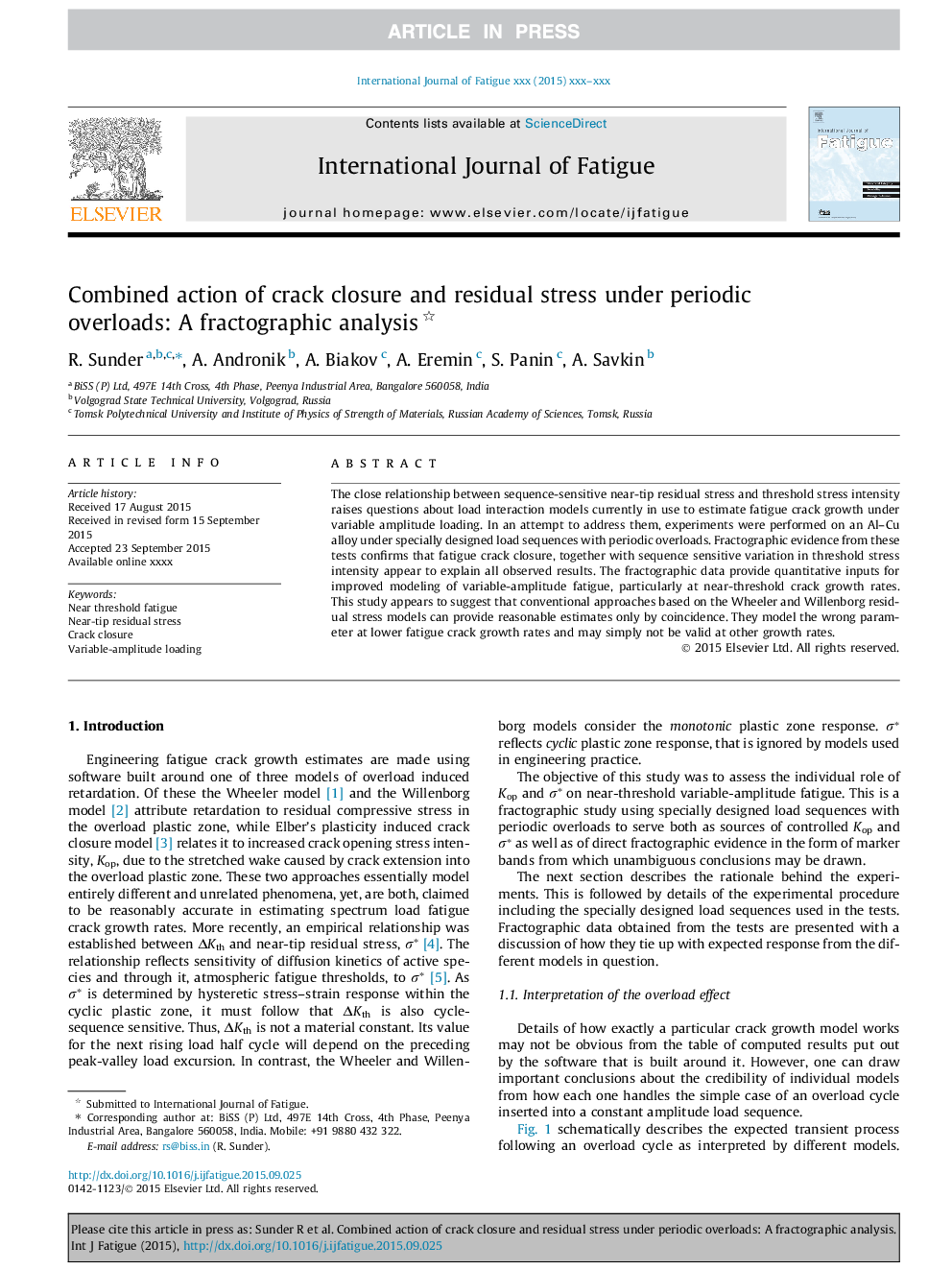| Article ID | Journal | Published Year | Pages | File Type |
|---|---|---|---|---|
| 7171894 | International Journal of Fatigue | 2016 | 9 Pages |
Abstract
The close relationship between sequence-sensitive near-tip residual stress and threshold stress intensity raises questions about load interaction models currently in use to estimate fatigue crack growth under variable amplitude loading. In an attempt to address them, experiments were performed on an Al-Cu alloy under specially designed load sequences with periodic overloads. Fractographic evidence from these tests confirms that fatigue crack closure, together with sequence sensitive variation in threshold stress intensity appear to explain all observed results. The fractographic data provide quantitative inputs for improved modeling of variable-amplitude fatigue, particularly at near-threshold crack growth rates. This study appears to suggest that conventional approaches based on the Wheeler and Willenborg residual stress models can provide reasonable estimates only by coincidence. They model the wrong parameter at lower fatigue crack growth rates and may simply not be valid at other growth rates.
Related Topics
Physical Sciences and Engineering
Engineering
Mechanical Engineering
Authors
R. Sunder, A. Andronik, A. Biakov, A. Eremin, S. Panin, A. Savkin,
